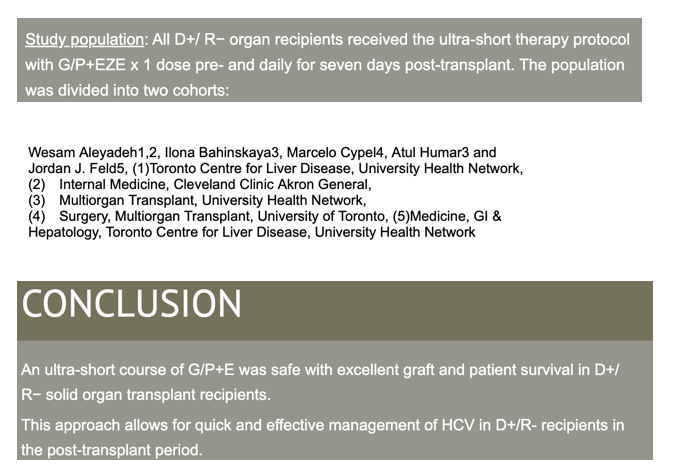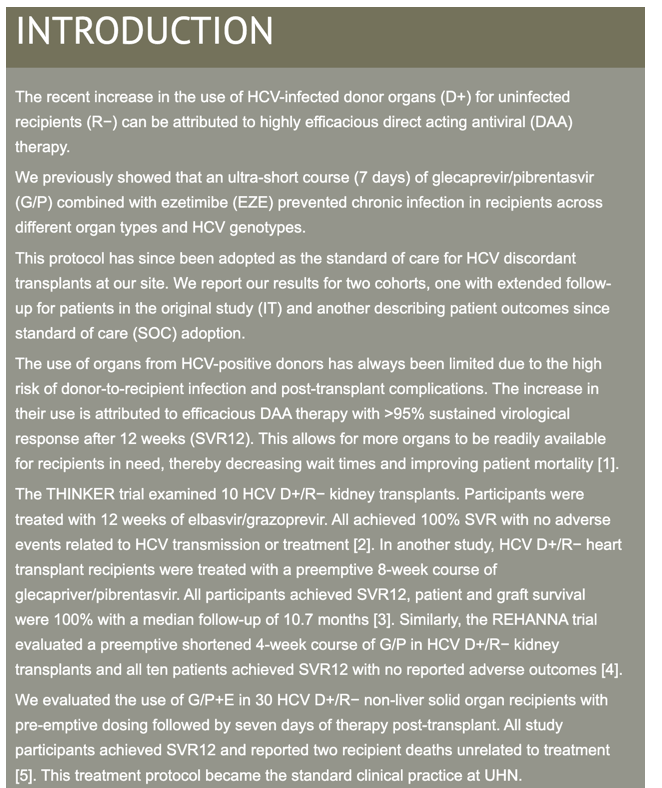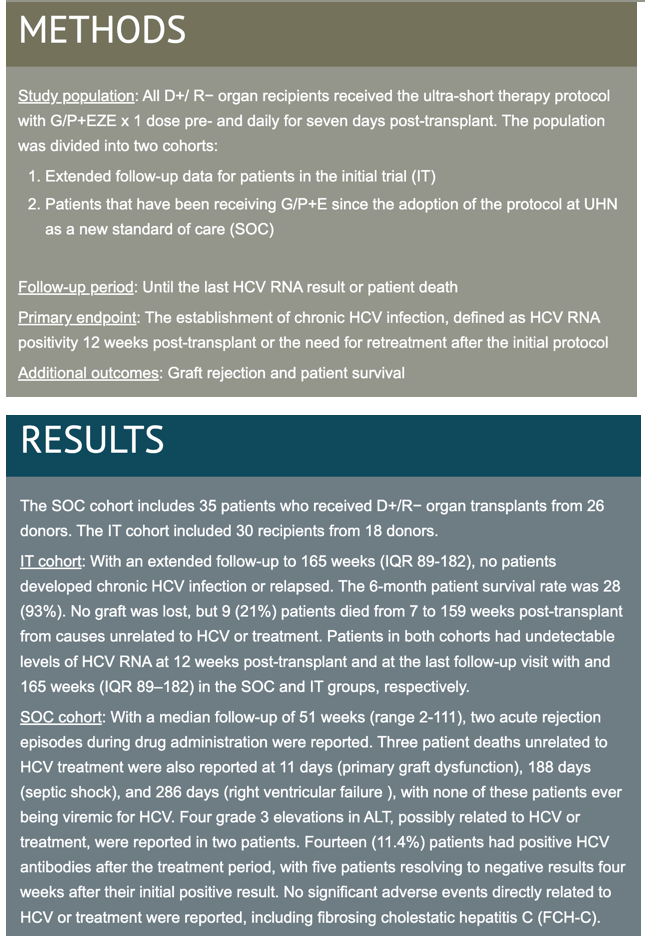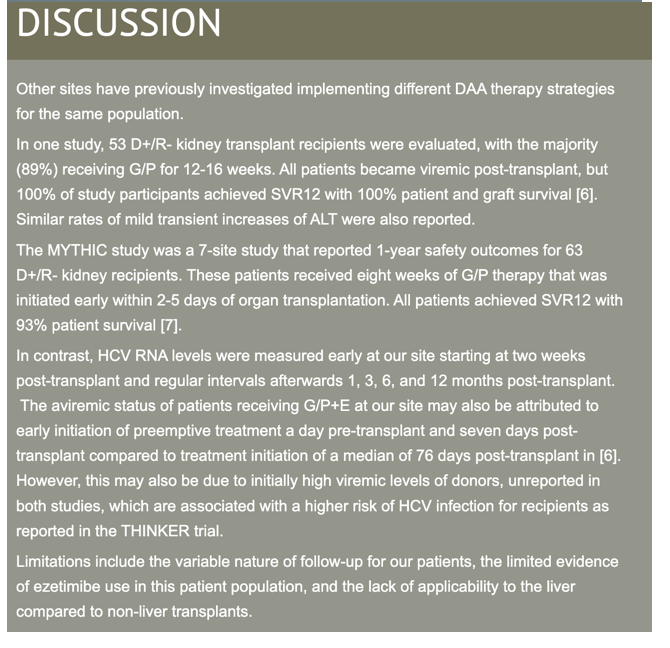 |
 |
 |
| |
ULTRA- SHORT COURSE GLECAPREVIR/PIBRENTASVIR WITH EZETIMIBE IN THE PREVENTION OF HEPATITIS C (HCV) TRANSMISSION FROM HCV- POSITIVE ORGAN DONORS TO HCV- NEGATIVE RECIPIENTS: ONGOING EXPERIENCE
|
| |
| |
AASLD 2022 Nov 4-8

program abstract
Background: The recent increase in the use of HCV- infected donor organs (D+) for uninfectedrecipients (R-) can be attributed to highly efficacious direct acting antiviral (DAA) therapy. We previously showed that an ultra-short course (7 days) of glecaprevir/pibrentasvir (G/P) combined with ezetimibe (EZE)prevented chronic infection in recipients across different organ types and HCV genotypes. This protocol hassince been adopted as standard of care for HCV discordant transplants at our site. We report our results for two cohorts, one with extended follow- up for patients in the original study, and another describing patientoutcomes since stan-dard of care (SOC) adoption.
Methods: The population included all D+/ R- organ recipients who received the ultra- short therapy protocolwith G/P+EZE x 1 dose pre- and daily for 7 days post-transplant. The follow-up period is reported until the last HCV RNA result or patient death. The primary endpoint is the establishment of chronic HCV infection,defined as HCV RNA positivity 12- weeks post-transplant, or the need for retreatment after the initial protocol. Additional outcomes include graft rejection and patient survival.
Results: Since adoption of the protocol as standard of care, 35 ad-ditional patients received D+/R- organtransplant from 26 donors. The SOC cohort included 16 (46%) females and 19 (54%) males with a mean age of 53 years (range 21-79) with 21 kidney, 5 lung, 5 heart, 2 pancreas, 2 kidney-pancreas organ transplants. All patients completed the full treatment regimen before or shortly after hospital discharge with no dosereductions or treatment discontinuation.
All patients had undetectable levels of HCV RNA at 2 weeks posttransplant and at the last follow-up visit with median follow- up of 51 weeks (range 2- 111). The initial trial included 30 recipients from 18 donors. With extended follow-up to 165 weeks (IQR 89- 182), no patients developed chronic HCV infection or relapsed. The 6- month patient survival rate was 93%. There was no graft loss, but 9 (21%) patients died from 7 to 165 weeks post-transplant with no HCV related deaths. All patients in both groups achieved SVR with no breakthrough or retreatment. In the SOC group, three patient deaths unrelated to HCV treatment were reported at 11- , 188- , and 286- days post-transplant. Two episodes of acute rejection and 5 grade 3 elevations in ALT in three patients possibly related to HCV or treatment were reported. Twelve (34%) patients had positive HCV antibodies after the treatment period.
Conclusion: An ultra- short course of G/P+E was safe with excellent graft and patient survival in D+/ R-solid organ trans-plant recipients. This approach is cost- saving, avoids complications of delayed therapy and can easily be operationalized into transplant protocols. These results support the current AASLD/IDSA recommendations to initiate prompt post- transplant treatment.



|
| |
|
 |
 |
|
|